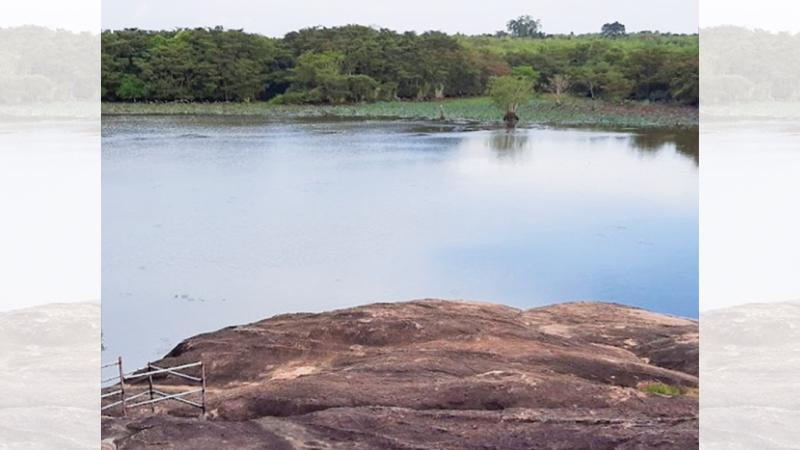
Sri Lanka is a culturally rich, traditional country which has no dearth of historical records that bear testimony to its uniqueness and grandeur. Among such records are stone inscriptions found across the country, unfolding different pages of the book of its history.
 Thonigala rock inscriptions, which are the longest found in the country are second to none of those ilk considering their ancientry and size and were of great import in unearthing concrete evidence to prove an important part of the country’s history.
Thonigala rock inscriptions, which are the longest found in the country are second to none of those ilk considering their ancientry and size and were of great import in unearthing concrete evidence to prove an important part of the country’s history.
The archaeological site where these unique rock inscriptions are found is in Anamaduwa about 24 kilometres away from the city of Puttalam, on the Puttalam- Kurunegala main road.
Thonigala rock inscriptions said to belong to the first century B.C, i.e, the reign of King Mahakuli Mahatissa (76- 62 B.C), who was the adopted son of king Valagamba, include two inscriptions engraved on a rock in Anamaduwa. Each inscription is about 100 feet long and each letter is about one feet in height and has been engraved about one inch deep into the rock. The inscription No.1 comprises 115 letters whereas the inscription No. 2 has 137 characters.
The folklore, which reveals how the name Thonigala came into being, is associated with the story of Vijaya and Kuveni. According to the story, King Vijaya wanted to marry a princess from India to become the king of Sri Lanka and therefore had to expel Kuveni, the first consort of King Vijaya, and her children from the palace. Thereafter, grief-stricken Kuveni cursed the king from the top of a rock which later came to be known as Lathonigala. It is now believed that as time went by Lathonigala became Thonigala.
The two rock inscriptions record the fact that the tank here named Thonigala Tank was offered to a temple by the name of Achchagirika Tissa Pabbatha Vihara ( known as Paramakanda Temple at present) in the vicinity.
The inscription No.1 says “Chief Abhaya’s son, chief Tissa offered his lake to the Maha Sangha, present and absent from all four directions, at the Achchagirika Tissa Pabbatha Vihara. Chief Tissa, the son of chief Abhaya got the king to make the donation to the maha sangha present and absent from all four directions”.
The other inscription records “This lake has been donated by chief Tissa, the son of chief Abhaya; and the two places named Achcha Nagara and Tavurikiya have been donated by King Gamini Abhaya to the bhikkhus of the Achchagirika Tissa Pabbatha Vihara, who were present and absent from all four directions”.
These two rock inscriptions divulge many things about the socio-economic and cultural conditions of that time, ancestral official names, titles of positions and ownership of prosperity held by those people and how they donated them to temples.
